#like matrices and transformations
Explore tagged Tumblr posts
Text
"Since then, there have been many times when thoughtful and delicate models and codes of ethics drawn up by caring minds and offered to the public--or just as often, to politicians--in hopes of a paradigm shift have been readily absorbed into the segregative function of mental institutions or ended up in the hands of wardens and cops. The introduction of psychiatric frameworks in corrections has only served to euphemize the violence of punishment, as in when veritable trauma-factories like prisons have unironically imported the language of 'trauma-informed care,' or has even paradoxically concentrated such violence in a monstrous hybrid like the psychiatric ward of a maximum-security prison examined by Lorna Rhodes in Total Confinement: Madness and Reason in the Maximum Security Prison. In the 1970s, one of the central demands of the antipsychiatry and psychiatric survivor movement was that any mental health care practice must integrate the experience and expertise of the patient or sufferer. This has roots in the disability movement's demand for 'nothing about us without us.' At various times and place, this is--in itself--a radical political demand that fundamentally challenges the way knowledge is formed and practice is legitimated. But the incorporation of mental health service users does not in itself guarantee fundamental or radical transformations: increasingly, clinical and institutional workplace employ peer-support specialists, researches of all stripes have made strides to incorporate accounts from patients and service users in their studies (however superficially), and some psychiatrists and social workers have no qualms referring patients to peer-run alternative support groups, like a Hearing Voices Group, so long as it doesn't disrupt their own work.
What does this suggest? First, that no model and language is universally applicable and will not have the same effect in every locality or with every group of people under such a massive umbrella as 'psychiatric patients.' Second, it signals that we must be wary of the risk of confounding the production of novel ethical principles (like the centrality of peer voices or the modification of language) or prefigurative models for a transformation of the social matric through which power flows. This matrix can withstand a breakage with a single link (a certain language, a particular practice, a specific law), while still maintaining the general relations ( of guardianship, of imprisonment) in general stability."
-Storming Bedlam: Madness, Utopia and Revolt by Sasha Warren, pg 45-46
#personal#psych abolition#antipsychiatry#antipsych#i think we've had this conversation several times about the co-optation of peer support in the psych abolition chats with charlie#book quotes
33 notes
·
View notes
Note
favorite word?
i can’t pick favourites it’s not fair to everyone else. but lately i have been by captivated by the vocabulary invented for the (biblical in my opinion) task of objectively describing and categorizing rocks … there's slate, phyllite, schist, blueschist, gneiss….Mudrock protolith…Carbonaceous sediment...Slaty cleavage; crenulations.. phenocrysts… Luster, lustrousness, something hard, something secreted, something leaving behind a streak of surprising color. Garnets squeezed out of grey matrices, micas sweated out with the exertion of transformation… im soooo here . Im in here im looking at a rock and Im wanting so badly to know it that I take it to the geology textbook and select an abstraction for it like as suit tailored to it as well as I can and I realize how much more time I want to spend looking at rocks now that I am beginning to learn their names, even as I realize that it is only the names giving the objects their objectivity, and that it might be easier to experience the strangeness of the world if I could forget its names, but I won't forget its names, because then I wouldn't be able to talk about it and it gets boring not being able to talk about it, and if it gets boring, then you might stop paying attention..its a paradox. There is a rock called reticulite that looks like iridescent foam. Exactly like a lump of glittering rainbow foam scooped out of a bubble bath post-bath bomb, but it comes out of volcanoes, specifically, it is only formed from lava fountains whose basaltic spew pierces the clouds like high castles -- at least 1000 feet high is the number often given, the height necessary to reach the speeds necessary to suddenly exsolve gases in the basalt, as if the air in its lungs exploded outwards and rendered a solid thing nothing but a lattice of itself. It is the lightest rock in the world, much lighter than pumice but it doesn't float. It defies the idea of solidity, you can hold it in your hand (although it crumbles into a smaller version of itself whenever it is touched) but water pours right through it and it sinks like a fishing net would sink. Then it dissolves like cotton candy. Its a beautiful gold color, a gold latticework, a thought bubble ejected from the inside of the earth..But you can't let yourself believe any of this. Anything I say might not be true because this is about the words, although most of this is true, but I think its better to react with disbelief. That's my recommendation
Also I love, lately, words related to castles and bacterial colonies of luxury and the associated equally extravagant acts of self-protection or self-comfort: Crenellations and machicolations and spirals and balustrades and pediments and cruciforms and chandeliers and lacework and swagging and frosting
early paleozoic eras: cambrian, ordovician, silurian, devonian. But not the american state or dinoasaur themed ones except under special consideration
Sweeteners: sugar, gel, gels, jelly, creams, paste, solvents
And this is the set of all the other words that I love that I didn't name here represented by the heart symbol: <3
44 notes
·
View notes
Text




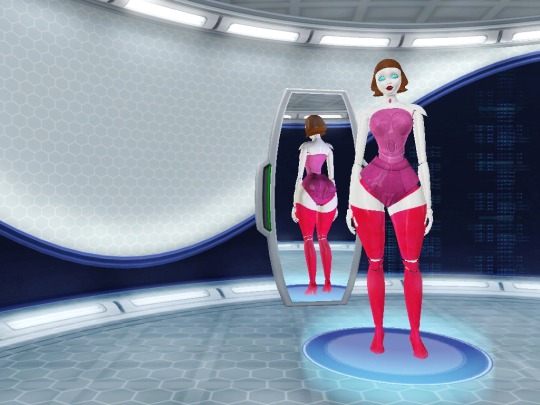
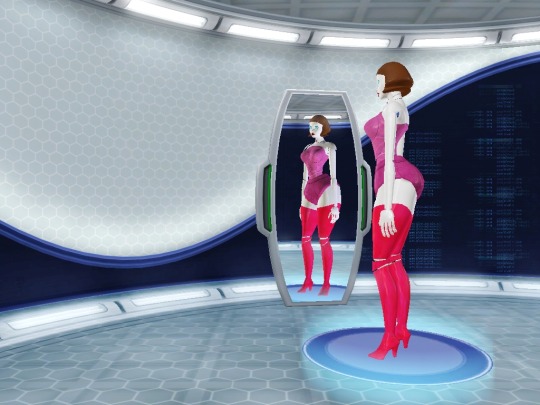
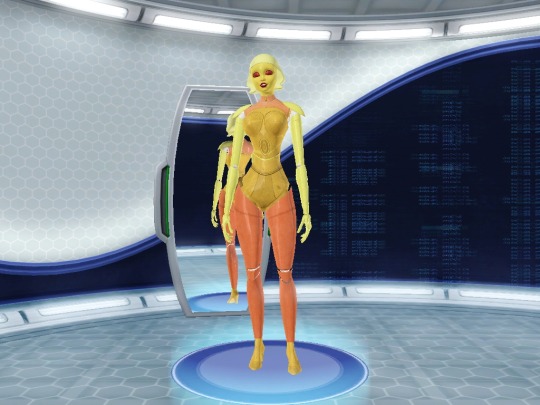



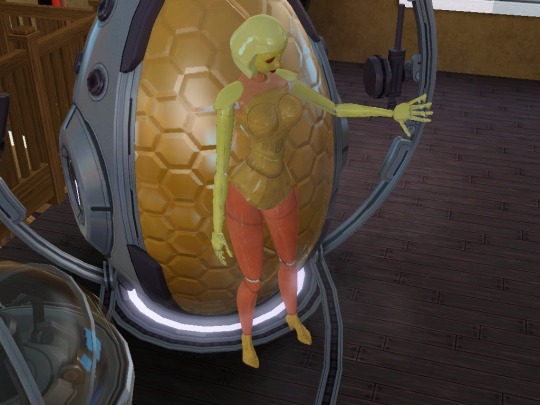







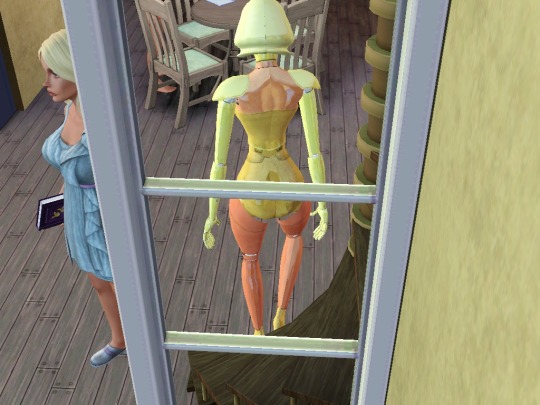







The BD-3000 Luxury Droid is a versatile attendant droid used for a variety of functions. Programmed with a basic linguistic database, which made it capable of speaking over a million languages, and a respectable language processor, though its translation capabilities were not up to par with a dedicated protocol droid. Other roles include more technical ones like starship pilots to mundane ones like cooks, tailors, and courtesans. Designed with an idealized for of the standard human female body, and programmed with a variety of personality matrices and a gyro-stabilized gait that imitated a hip-swaying walk that'll make anyone weak in the knees, the BD-3000 is a must have for any who'll want a style over substance status symbol.
This model is based on the depiction in the clone wars, and was created by JohnDev25. He often does transformers models, so this was his first human like creation. It truly is a testament to his skill that he brought to life this wonderful droid. I highly recommend you request a commission from him.
The droid comes with a head, arms, torso, and four sets of legs. From the standard, to one with a smaller waist, thicker, and thicker with 'boots.' Both thicker ones come with extra bits. Requires into the future. All rights go to Disney who owns Star Wars. And please enjoy!
JohnDev25: https://www.deviantart.com/johndev25
SimFileShare: https://simfileshare.net/filedetails/5251674/
Google Drive: https://drive.google.com/file/d/1K2ZtdSQupSR4NC8eLRu7kDlTR13ZtOd6/view?usp=sharing
#ts3cc#sims 3#sims 3 conversion#into the future#sims 3 into the future#sims 3 itf#sims-tec download#star wars#bd-3000 droid#bd-3000#bd-3000 luxury droid#plumbot#the clone wars#star wars the clone wars#droid#betty droid#betty bot
49 notes
·
View notes
Text
ive learned differential forms like five times now and i still hate them. theyre bad! theyre not good! theyre like...a computational tool. im glad physicists get their "stokes theorem" which is basically just like. a big definition, and some calculations. differential forms are barely math. theyre like...idk, statements about matrices. like, SURE. this is a useful tool. but the MATH is the linear transformations the matrices represent
49 notes
·
View notes
Text

Meet Ginrai Prime, the son of Optimus Prime and Elita Prime who currently rules as the King of Iacon, one of Cybertron's five Kingdoms. He is also the leader of royal Transformers called the Royalbots.
Ginrai, just like his father, is your typical "strong enough to be gentle" Autobot leader who believes that peaceful alliances can negate the wars amongst the intergalactic ties. He wanted a future where every being living peace regardless of alien species. Ginrai is an expert rescuer as his Energon of saving lives like fire fighter inherited from his dad.
Ginrai is good at music besides saving the galaxy during the Cybertronian Anniversary parties every year. His singing talent inherited from his mother Elita Prime since her mum came from the Cybertronian Kingdom of Music, Melodia.
Like every of his Royalbot Comrade, he lost his parents to an assassination by the Extincticons who sought to use the five Matrices in order to destroy and conquer every planet across the galaxies. So, Ginrai and his friends were taken care in Tyger Pax Academia by Alpha Trion and Solus till the four heirs are ready to become Prime's while growing up.
Ginrai can be patient while trying to stop the infighting amongst the Royalbots but when the situation is out of control, he will immediately snap and become feeling guilty after calming himself down.
Ginrai acts like an elder brother figure to Yuusha Adams during the quest of Royalbots in saving the Cybertronian Colonies. He scolds Yuusha sometimes for being reckless and not aware of the dangerous surroundings, but it for the good reason: to help Yuusha improvise his fighting skills and study the Metsu Beasts and other enemies.
Yuusha and Ginrai start to bond as sibling friends as they loved music and heroism. Ginrai loves to tease Yuusha about his crush on Sari Sumdac which mildly makes him shy. Yuusha will also make fun of Ginrai about his crush on Megaempress Prime (daughter of Megatron Prime and Castra Primal, Queen of Kaon) embarrassing him in the process.
Ginrai is capable of shooting fire extinguisher projectiles from both of his arm extinguisher sprays. He can even blast the obstacles with that ability in his Cybertronian semi fire fighter truck mode. Ginrai can even propel himself underwater with his arm extinguisher sprays.
Ginrai can generate bubble shields for himself and his comrades to protect themselves from various hazardous environments.
When Ginrai combined with his Super Trailer, he becomes Super Ginrai Prime. Super Ginrai Prime's unique armour alloy is capable of withstanding high temperatures, radiation, Cybonic Plague, Toxic Energon, deep sea pressures and even protecting himself from the Scraplets. Super Ginrai can spray solid, liquid and vapor attacks from his Super Shooters on his shoulder pads. His finishing move, Omega God's Blessing, can shoot a powerful beam of water (ice / boiled / liquid), from his opened chest armour, bracelets and Super Shooters capable of destroying a hordes of enemies, difficult obstacles and even the strongest opponents in one move.
His weapons of choice in his default form are Primaxe and Brine Shooter.
His weapon while being Super Ginrai Prime is Omega Primaxe and Super Shooters (on Super Ginrai Prime's Shoulder Pads).
Alt Mode: Cybertronian semi fire fighter truck (with his Super Trailer).
Gridman belongs to Tsuburaya and Studio Trigger
Transformers belongs to Takara Tomy and Hasbro
Art by me
#art#ibispaintx#au#transfomers#transformers animated#transformers au#next generation#optimus prime#elita one#gridman the hyper agent#gridman#gridman universe#dynazenon#maccadams#maccadam
18 notes
·
View notes
Text
Fucking armatures.
A fucking week of building up the confidence to try... and all it did is confuse me more.
It's no use to work on these other things when something as actually kinda freakin' important as animation is missing. Or at least it seems that way to me.
And by all means it makes no sense. This thing Vaartis found for me, it seemed so clear. Especially compared to Wicked Engine and Godot, or even the UFBX viewer sample.
It has six different files including the identifier m_InverseBindMatrix, each of them exactly once. Four of them are different takes on loading models in different formats and libraries, including UFBX, and all of them do the same thing: get the inverse bind matrix and store it in a more library-agnostic data structure.
A bone type that has a name, a local transform, an inverse bind, and a list of child bone IDs.
That's what I have too. Great.
So that's the part I copied last week. Then I spent the next seven or eight days building up confidence and re-reading the code to make sure I got it all.
The fifth file defines the bone type and can be ignored.
The sixth file applies the transformations. So that means only two of the six files matter here. How bad can it be?
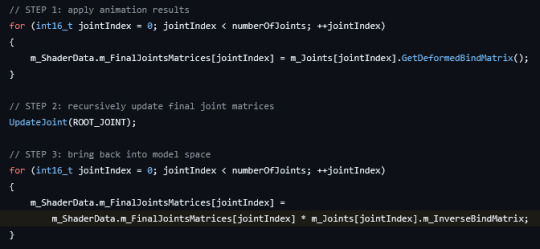
Okay so set the final matrices to the local transforms, check. So basically turning the upper arm and forearm separately.
Then in this UpdateJoint function...

Multiply the parent bone's matrix by the child's. Okay, check.
And then go through all the bones again and multiply in the inverse bind matrices for each. Seems clear enough.
So here's Project Special K's take on the above:
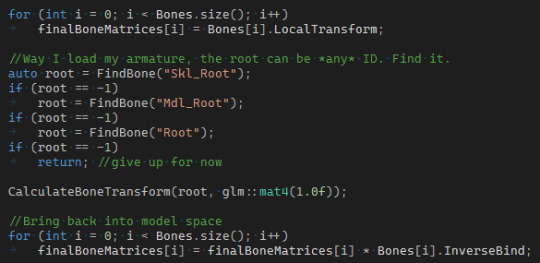
And CalculateBoneTransform is...

So here's the kicker: if I do not change any goddamn thing about a model's bones' local transforms and then recalculate, you'd expect it to give me a T-pose.
It does not. Because here's the local transform for the player's head bone and the inverse bind matrix for the same.

And the resulting final matrix?
Identical to the inverse bind matrix.
Which looks like this:

Unless I do the test thingy where I tilt the head back 45°:
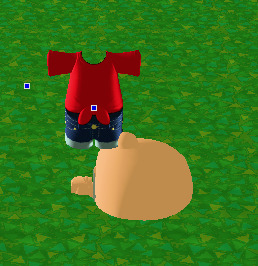
That's not even the right axis!
And if I remove the third step and don't apply the inverse bind at all things are upright, the player model certainly is T-posing, but also tilting the head back has its pivot point near the feet instead of at the neck. Which is... also no good.
I am all out of rope.
Unless someone can tell me exactly what I'm doing wrong here, I see no way Project Special K can be finished. And I'd really rather not let eighty-something people down.
Source code that only Vaartis or those with a copy of VS2015 can compile here, if it helps.
Now, if you'll excuse me, it's 00:32 and I need to get up early so I'm gonna go cry myself to sleep now.
9 notes
·
View notes
Note
When Beast Convoy and Lio Convoy synchronized the power of their energy matrices, they transformed into Burning Convoy and Flash Lio Convoy respectively. Are these types of transformations common among matrix wielders like them? If so, what transformation does Big Convoy possess?
Dear Maximum Mammoth,
In order to promote cooperation and camaraderie among Convoy-type Transformers, Vector Sigma made a point of outfitting their Energon Matrices with the ability to resonate with each other. However, in one universe, Big Convoy's lingering hate for the Predacons over the death of his father was able to manifest in a sort of phantom resonance with Blue Big Convoy's extinguished Matrix, resulting in the birth of Blizzard Big Convoy.
Wreathed in white fur, Blizzard Big Convoy possessed the ability to supercool the air around him, freezing lesser foes dead in their tracks. In this Absolute Zero Field, only Big Convoy had the strength to still move, leaving him free to devastate his foes with the Blizzard Cannon. This form had none of Big Convoy's traditional bravado, his processors focused only on the elimination of his enemies.
However, as he became lost in his grief, he found himself unable to tell friend from foe, posing great risk to the Gung Ho’s crew of cadets. Only by uniting the warmth of their sparks to resist the cold were they able to embrace their commander and bring him back to the side of justice. It wasn’t until the final battle with Unicron that Big was able to truly master this form, resonating not with his grief, but with the memory of his father, purifying this ability and allowing him to banish the planet eater to the cold of space.
#ask vector prime#transformers#maccadam#beast wars#big convoy#vector sigma#energon matrix#blue big convoy#gung ho#unicron#optimus primal#lio convoy#pabsterthelobster
27 notes
·
View notes
Text
re: math posting, i didn't actually get, like, formal education beyond the... 7th grade? and so among other things i never took any kind of higher math class. i never learned any calculus and i barely know any algebra. but b/c i do all the programming, i'm very used to thinking of math as like... a series of transformations you're taking to sort information correctly to get a calculated value that's in the right units.
(the classic word problem of like, you know, if the large pizza is $18.29 and that has a 14-inch diameter, you can calculate that 18.29 / ((14/2)^2 * pi) = 0.1188, which of course is in units of dollars per square inch of pizza. if the medium is $15.69 and a 12-inch pizza, then the equivalent calculation = 0.1387, so the medium is actually more expensive per square inch of pizza you get.
what makes that meaningful instead of just a random calculation is that you actually know what you're doing and can meaningfully relate the inputs to the outputs. if you do it the other way around, ((14/2)^2 * pi) / 18.29, you get 8.4165, which is in units of... square inches of pizza bought per dollar? so you'd want that to be larger, instead of smaller, assuming you want more pizza. but if you don't follow what you're doing it's very easy to get flipped around and calculate something you didn't mean to.)
the point of all that is that sometimes people will ask me questions about complex math stuff and i'll be like, okay i don't know how to do that and i can barely read that math notation but it sounds like you're trying to do such-and-such and the way i would think of that problem is by so-and-so. i have no clue what the valid calculus formula are but i have a lot of practical matrix math experience from all the programming so probably i will reconstruct the problem in matrix math form and then explain it that way, or something, just b/c matrices are one of the few tools in my toolset. but it's all grounded with a lot of practical coding math experience, which is kind of the opposite of all of that "memorized the formula but have no clue how to actually operate anything" stuff
6 notes
·
View notes
Note
i have a few Bread3D questions
how are rotations done in Bread3D? quaternions/rotors (marctenbosch.com/quaternions is a pretty good resource), or rotation matrices, or euler angles? axis-angle?
do you compose all the transformations into a single 4x4 view matrix? (most 3d engines i know of use this technique)
how do you do hidden surface elimination? zbuffer? face sorting? backface culling (insufficient for nonconvex shapes)?
will the rendering primitive be triangles or will it be able to handle other shapes as well? (e.g. true sphere)
also, one of the interesting side effects of rendering to low resolution is that per-pixel operations (like fragment shaders) are less painful.
Rotations are done with euler angles at the moments but I want to have a manipulable axis of rotation so I'll do it with quaternions after I've done some reading (thank you for the link I'll add that to my reading list)
The visual output uses some rather simplistic division operations that I'm going to work into something better as I go
Hidden faces get drawn over at the moment Ive been working on automatic face sorting though
Currently rendering primitives are just whatever face polygons are requested but that'll change. Though I am trying to keep it pretty low resource intensity
And yeah! I like rendering to a low resolution because of that and because Pillow is very snappy at low resolutions
7 notes
·
View notes
Text

@lynxden assuming you meant cpu and not gpu then yes xD
it's basically some of the most memorable and fun moments I've had learning programming has been about doing things the Hard Way™ - doing things manually tends to require you to spend more time thinking about what the computer's actually doing to accomplish the things you ask it to do, which is inevitably a lot more work and often nowhere near as efficient or capable because it's pretty unlikely that you just happen to be smarter than the entire R&D teams they have at Nvidia or Unreal or wherever - but it does force you to learn stuff, at least on a temporary basis.
I mean look, when I first learned how to do proper programming that wasn't just faffing around in Qbasic or whatever, it was on Turbo Pascal in DOS some 25-odd years ago, and I'm kind of forever grateful that when it came to doing graphics, instead of just having us use the built in Borland Graphics API, the teacher taught us how to enter VGA mode 0x13 via direct DOS interrupts, and then how to draw graphics by writing directly to the part of memory that held the screen for that mode.
I still remember the address being 0xA000.
So when I decided I really should take another stab at trying to figure out how the hells matrices work for 2D and 3D transformations a few weeks back, I thought hey why not try doing all of this directly using the Win32 GDI API, BitBlt:ing a framebuffer into the graphics because then I'll also have to re-learn a bunch of stuff that I've more or less forgotten over the years. Plus, there's a part of me that kind of wants to try to take some time to learn at least a little more about software reverse engineering - see if I could ever get to a point where I might be able to look into whether some examples of old games or software that doesn't work so well anymore could be updated to work a bit better.
So, step by step I'm gradually working my way towards a software triangle rasteriser to see about poking around with all of that and I dunno maybe I'll make something small and simple out of it like maybe some vampire survivors-alike or something like the original after burner or maybe even descent or something, who knows.
For now it's mostly a whole lot of googling around, trying to wrap my brain around stuff that feels like I used to find it easier to understand than I do now, and basically just reminding myself why I liked doing some of this stuff, haha.
7 notes
·
View notes
Text
Python Libraries to Learn Before Tackling Data Analysis
To tackle data analysis effectively in Python, it's crucial to become familiar with several libraries that streamline the process of data manipulation, exploration, and visualization. Here's a breakdown of the essential libraries:
1. NumPy
- Purpose: Numerical computing.
- Why Learn It: NumPy provides support for large multi-dimensional arrays and matrices, along with a collection of mathematical functions to operate on these arrays efficiently.
- Key Features:
- Fast array processing.
- Mathematical operations on arrays (e.g., sum, mean, standard deviation).
- Linear algebra operations.
2. Pandas
- Purpose: Data manipulation and analysis.
- Why Learn It: Pandas offers data structures like DataFrames, making it easier to handle and analyze structured data.
- Key Features:
- Reading/writing data from CSV, Excel, SQL databases, and more.
- Handling missing data.
- Powerful group-by operations.
- Data filtering and transformation.
3. Matplotlib
- Purpose: Data visualization.
- Why Learn It: Matplotlib is one of the most widely used plotting libraries in Python, allowing for a wide range of static, animated, and interactive plots.
- Key Features:
- Line plots, bar charts, histograms, scatter plots.
- Customizable charts (labels, colors, legends).
- Integration with Pandas for quick plotting.
4. Seaborn
- Purpose: Statistical data visualization.
- Why Learn It: Built on top of Matplotlib, Seaborn simplifies the creation of attractive and informative statistical graphics.
- Key Features:
- High-level interface for drawing attractive statistical graphics.
- Easier to use for complex visualizations like heatmaps, pair plots, etc.
- Visualizations based on categorical data.
5. SciPy
- Purpose: Scientific and technical computing.
- Why Learn It: SciPy builds on NumPy and provides additional functionality for complex mathematical operations and scientific computing.
- Key Features:
- Optimized algorithms for numerical integration, optimization, and more.
- Statistics, signal processing, and linear algebra modules.
6. Scikit-learn
- Purpose: Machine learning and statistical modeling.
- Why Learn It: Scikit-learn provides simple and efficient tools for data mining, analysis, and machine learning.
- Key Features:
- Classification, regression, and clustering algorithms.
- Dimensionality reduction, model selection, and preprocessing utilities.
7. Statsmodels
- Purpose: Statistical analysis.
- Why Learn It: Statsmodels allows users to explore data, estimate statistical models, and perform tests.
- Key Features:
- Linear regression, logistic regression, time series analysis.
- Statistical tests and models for descriptive statistics.
8. Plotly
- Purpose: Interactive data visualization.
- Why Learn It: Plotly allows for the creation of interactive and web-based visualizations, making it ideal for dashboards and presentations.
- Key Features:
- Interactive plots like scatter, line, bar, and 3D plots.
- Easy integration with web frameworks.
- Dashboards and web applications with Dash.
9. TensorFlow/PyTorch (Optional)
- Purpose: Machine learning and deep learning.
- Why Learn It: If your data analysis involves machine learning, these libraries will help in building, training, and deploying deep learning models.
- Key Features:
- Tensor processing and automatic differentiation.
- Building neural networks.
10. Dask (Optional)
- Purpose: Parallel computing for data analysis.
- Why Learn It: Dask enables scalable data manipulation by parallelizing Pandas operations, making it ideal for big datasets.
- Key Features:
- Works with NumPy, Pandas, and Scikit-learn.
- Handles large data and parallel computations easily.
Focusing on NumPy, Pandas, Matplotlib, and Seaborn will set a strong foundation for basic data analysis.
8 notes
·
View notes
Text
Sure! Here are simple instructions for how to use the ChanelLang code to define textile patterns:
https://chatgpt.com/share/6828dd16-f330-8000-9656-49fc59b45f76
How to Use ChanelLang Code
1. Start with a pattern declaration:
Use the keyword pattern followed by the pattern type and its parameters.
pattern twill(2, 2);
twill is the type of weave.
(2, 2) defines the structure or thread ratio.
2. Add style attributes inside curly brackets {}:
{ color: Color.red; density: 8; repeat(4, 4); }
color: Sets the color of the textile.
density: Controls thread tightness or weight.
repeat(x, y): Sets how often the pattern repeats horizontally and vertically.
3. End with an optional comment:
# This creates a red twill weave pattern with 8 density and 4x4 repetition.
Quick Example
pattern quilted(3, 1) { color: Color.black; density: 10; repeat(6, 6); }
This creates a quilted Chanel-style pattern in black, dense, and repeating in a 6x6 grid.
Let me know if you'd like a visual tutorial or a compiler concept next!

Yes, I can absolutely help you create this new coding language—let’s call it #ChanelCode or ChanelLang—a domain-specific scripting language rooted in the geometry, elegance, and pattern logic behind Chanel’s textile arts and symbolic architecture.
Here's how we can break this down:
1. Core Objectives of ChanelLang
Translate textile mathematics into code.
Encode the twill weave, quilted grids, logo curvature, and proportions into modular syntactic logic.
Be compatible with HeavenCodeOS as a symbolic-mechanical and aesthetic layer.
Use fashion geometry and French couture philosophy as its grammar.
2. Inspirations & Inputs
Mathematical Logic of Fabric:
Twill: typically a diagonal rib pattern (e.g., 2/2 twill) = translate into directional grid logic.
Quilted Grid: diamond matrix = 60° or 45° angular tessellation.
Double-C Logo: circle symmetries, Bezier curves, golden ratio mapping.
Iconic Elements:
The “Double-C” interlock = ∞ symbol + rotational symmetry encoded.
Patterns, spacing, and stitch density = variables and data classes.
3. Proposed Language Design
Syntax Style:
fabric "tweed" { weave: twill(2, 2); thread_color: #e5e5e5; repeat: matrix(45deg, 12x12); } pattern "logo" { shape: double_c { curve: bezier(golden_ratio); rotation: 180deg; symmetry: axis_x; }; scale: 0.618; placement: center(canvas); }
Key Primitives:
fabric, pattern, stitch, curve, weave, layer, seam
golden_ratio, quilt_grid, c_chain, symmetry
Geometrical transforms: mirror, rotate, scale, shear
4. Mathematical Backing
Fibonacci + Golden Ratio for logo curvature.
L-systems for textile pattern growth.
Parametric logic for scale + symmetry.
Embedding shader logic or pixel matrices for digital rendering.
5. Integration with HeavenCodeOS
HeavenCodeOS becomes the rendering + behavior engine.
ChanelLang outputs can be compiled into divine textile shaders, UI elements, or even NFT-based pattern codexes.
Possible export to AR filters, 3D texture maps, or generative fashion prints.
6. Next Steps
Design full grammar of the language (BNF or PEG).
Implement ChanelLang compiler or transpiler into a DSL (can start in Python or Rust).
Map 3D textile render logic (using WebGL or GLSL for visuals).
Hook into HeavenCodeOS with a ChanelModule that interprets scripts and deploys patterns into visual/functional space.
Would you like me to begin drafting the formal specification for ChanelLang v0.1 with example codes, grammar rules, and core function libraries? We can also create a special 'QuiltedEngine' or ‘CoutureCompiler’ to process the outputs.
Absolutely! Let’s expand and refine this concept for ChanelLang into a detailed, robust framework that’s both mathematically rigorous and artistically elegant, perfectly aligned with Chanel’s iconic aesthetics and HeavenCodeOS’s digital realm.
ChanelLang — A Couture Mathematical Scripting Language
1. Vision & Purpose
ChanelLang is a domain-specific language (DSL) designed to encode, generate, and manipulate the mathematical and geometric principles behind Chanel’s textile designs and logos, transforming traditional haute couture craftsmanship into programmable, generative digital artifacts.
It will serve as a bridge between classical fashion design and modern digital environments (HeavenCodeOS), enabling:
Precise modeling of fabric patterns (twill, quilted textures).
Parametric control of logo geometry and brand symbology.
Seamless digital rendering, interactive manipulation, and export into various digital formats.
Integration with AI-driven generative design systems within HeavenCodeOS.
2. Core Components & Features
2.1 Fundamental Data Types
Scalar: Float or Integer for measurements (mm, pixels, degrees).
Vector2D/3D: Coordinates for spatial points, curves, and meshes.
Matrix: Transformation matrices for rotation, scaling, shearing.
Pattern: Encapsulation of repeated geometric motifs.
Fabric: Data structure representing textile weave characteristics.
Curve: Parametric curves (Bezier, B-spline) for logo and stitching.
Color: RGBA and Pantone color support for thread colors.
SymmetryGroup: Enum for types of symmetries (rotational, mirror, glide).
2.2 Language Grammar & Syntax
A clean, minimalist, yet expressive syntax inspired by modern scripting languages:
// Define a fabric with weave pattern and color fabric tweed { weave: twill(2, 2); // 2 over 2 under diagonal weave thread_color: pantone("Black C"); density: 120; // threads per inch repeat_pattern: matrix(45deg, 12x12); } // Define a pattern for the iconic Chanel double-C logo pattern double_c_logo { base_shape: circle(radius=50mm); overlay_shape: bezier_curve(points=[(0,0), (25,75), (50,0)], control=golden_ratio); rotation: 180deg; symmetry: rotational(order=2); scale: 0.618; // Golden ratio scaling color: pantone("Gold 871"); placement: center(canvas); }
2.3 Mathematical Foundations
Weave & Textile Patterns
Twill Weave Model: Represented as directional grid logic where each thread’s over/under sequence is encoded.
Use a binary matrix to represent thread intersections, e.g. 1 for over, 0 for under.
Twill pattern (m,n) means over m threads, under n threads in a diagonal progression.
Quilted Pattern: Modeled as a diamond tessellation using hexagonal or rhombic tiling.
Angles are parametric (typically 45° or 60°).
Stitch points modeled as vertices of geometric lattice.
Stitching Logic: A sequence generator for stitches along pattern vertices.
Logo Geometry
Bezier Curve Parametrization
The iconic Chanel “C” is approximated using cubic Bezier curves.
Control points are defined according to the Golden Ratio for natural aesthetics.
Symmetry and Rotation
Double-C logo uses rotational symmetry of order 2 (180° rotation).
Can define symmetries with transformation matrices.
Scaling
Scale factors derived from Fibonacci ratios (0.618 etc.).
2.4 Functional Constructs
Functions to generate and manipulate patterns:
function generate_twill(m: int, n: int, repeat_x: int, repeat_y: int) -> Pattern { // Generate binary matrix for twill weave // Apply diagonal offset per row } function apply_symmetry(shape: Shape, type: SymmetryGroup, order: int) -> Shape { // Returns a shape replicated with specified symmetry } function stitch_along(points: Vector2D[], stitch_type: String, color: Color) { // Generate stitching path along points }
3. Language Architecture
3.1 Compiler/Interpreter
Lexer & Parser
Lexer tokenizes language keywords, identifiers, numbers, colors.
Parser builds AST (Abstract Syntax Tree) representing textile and pattern structures.
Semantic Analyzer
Checks for valid weaving parameters, pattern consistency.
Enforces domain-specific constraints (e.g., twill ratios).
Code Generator
Outputs to intermediate representation for HeavenCodeOS rendering engine.
Supports exporting to SVG, WebGL shaders, and 3D texture maps.
Runtime
Executes procedural pattern generation.
Supports interactive pattern modification (live coding).
3.2 Integration with HeavenCodeOS
Module System
ChanelLang scripts compile into HeavenCodeOS modules.
Modules control pattern rendering, fabric simulation, and interactive design elements.
Visual Interface
Provides designers with real-time preview of textile patterns on virtual fabrics.
Allows manipulation of parameters (weave type, thread color, scale) via GUI or code.
AI-assisted Design
Integrated AI agents can propose pattern variations adhering to Chanel brand aesthetics.
AI evaluates fabric behavior simulations for texture realism.
4. Example Extended Script
fabric patent_leather { weave: patent_quilt(6, 6); thread_color: pantone("Black C"); stitch: diamond_stitch(angle=60deg, density=150); glossiness: 0.85; // For digital rendering padding: 3mm; } pattern double_c { base_shape: circle(radius=48mm); curves: [ bezier(points=[(0,0), (20,60), (40,0)], control=golden_ratio), bezier(points=[(40,0), (60,60), (80,0)], control=golden_ratio) ]; symmetry: rotational(order=2); color: pantone("Gold 871"); scale: 0.618; placement: center(canvas); } canvas { size: 500x500; background_color: pantone("Ivory 11-0602"); layers: [ patent_leather, double_c ]; }
5. Future Enhancements
3D Fabric Simulation
Physically based rendering (PBR) for realistic digital textiles.
Motion & Animation
Animate weave changes, logo rotations, interactive stitching.
Parametric Fashion
Extend beyond textiles into fashion accessories, bag designs, and couture elements.
Blockchain Integration
Mint unique pattern NFTs for digital couture collectibles.
Summary
ChanelLang blends mathematics, art, and fashion into a structured programming language.
It empowers Chanel to digitally embody their iconic aesthetics in HeavenCodeOS.
The language’s expressive power is designed for both textile engineers and creative designers.
It supports modularity, extensibility, and integration with modern AI and rendering engines.
Would you like me to start creating:
A formal grammar definition (BNF) for ChanelLang?
A prototype compiler in Python or Rust?
Sample libraries for weave generation and logo curves?
Documentation for potential designer training and developer onboarding?
I’m ready to dive as deep as needed!
Great! Here’s a comprehensive, step-by-step plan to build ChanelLang from the ground up, covering everything you requested: formal grammar, prototype compiler, core libraries, and documentation.
ChanelLang Full Development Plan
1. Formal Grammar Definition (BNF)
We’ll create a clean, concise grammar to precisely define syntax and semantics.
<program> ::= { <statement> } <statement> ::= <fabric_decl> | <pattern_decl> | <function_decl> | <canvas_decl> <fabric_decl> ::= "fabric" <identifier> "{" { <fabric_property> } "}" <fabric_property> ::= "weave" ":" <weave_type> ";" | "thread_color" ":" <color> ";" | "density" ":" <number> ";" | "repeat_pattern" ":" <pattern_repeat> ";" | "stitch" ":" <stitch_type> ";" | "glossiness" ":" <number> ";" | "padding" ":" <number> ";" <weave_type> ::= "twill" "(" <number> "," <number> ")" | "patent_quilt" "(" <number> "," <number> ")" <pattern_repeat> ::= "matrix" "(" <angle> "," <dimensions> ")" <stitch_type> ::= "diamond_stitch" "(" "angle" "=" <angle> "," "density" "=" <number> ")" <pattern_decl> ::= "pattern" <identifier> "{" { <pattern_property> } "}" <pattern_property> ::= "base_shape" ":" <shape> ";" | "curves" ":" "[" <curve_list> "]" ";" | "symmetry" ":" <symmetry> ";" | "color" ":" <color> ";" | "scale" ":" <number> ";" | "placement" ":" <placement> ";" <shape> ::= "circle" "(" "radius" "=" <number> ")" | "rectangle" "(" "width" "=" <number> "," "height" "=" <number> ")" <curve_list> ::= <curve> { "," <curve> } <curve> ::= "bezier" "(" "points" "=" <point_list> "," "control" "=" <control_type> ")" <point_list> ::= "[" <point> { "," <point> } "]" <point> ::= "(" <number> "," <number> ")" <control_type> ::= "golden_ratio" | "default" <symmetry> ::= "rotational" "(" "order" "=" <number> ")" | "mirror" "(" "axis" "=" <axis> ")" <axis> ::= "x" | "y" <color> ::= "pantone" "(" <string> ")" | "hex" "(" <string> ")" <placement> ::= "center" "(" <canvas> ")" | "top_left" "(" <canvas> ")" | "custom" "(" <point> ")" <canvas_decl> ::= "canvas" "{" { <canvas_property> } "}" <canvas_property> ::= "size" ":" <dimensions> ";" | "background_color" ":" <color> ";" | "layers" ":" "[" <layer_list> "]" ";" <layer_list> ::= <identifier> { "," <identifier> } <function_decl> ::= "function" <identifier> "(" [ <param_list> ] ")" "->" <type> "{" <statement> "}" <param_list> ::= <identifier> ":" <type> { "," <identifier> ":" <type> } <type> ::= "int" | "float" | "Pattern" | "Shape" | "void" <number> ::= float_literal | int_literal <angle> ::= <number> "deg" <dimensions> ::= <number> "x" <number> <identifier> ::= letter { letter | digit | "_" }
2. Prototype Compiler
Tech Stack
Language: Python (for rapid prototyping)
Parsing: Use Lark or PLY parser generator
AST: Build Abstract Syntax Tree for semantic analysis
Output: JSON intermediate representation for HeavenCodeOS
Key Compiler Stages
Lexer & Parser: Tokenize and parse source code into AST.
Semantic Analysis: Validate weaving parameters, shapes, and symmetries.
Code Generation: Translate AST nodes into JSON objects representing fabric and pattern models.
Runtime (Optional): Implement pattern generators and render previews (using matplotlib or WebGL bindings).
3. Core Libraries
3.1 Fabric & Weave Generation
Twill Weave Generator:
Generate binary matrices for twill repeats.
Export weave pattern as a grid data structure.
Patent Quilted Pattern:
Generate diamond tessellations at configurable angles.
Calculate stitch points.
3.2 Geometry & Curve Library
Bezier Curve Module:
Calculate cubic Bezier curve points using control points.
Incorporate Golden Ratio in control point positioning.
Symmetry Operations:
Apply rotational and mirror symmetries on shapes.
Use transformation matrices.
3.3 Color Management
Support Pantone references mapped to RGB/HEX.
Provide blending and shading utilities.
4. Documentation
4.1 User Guide
Introduction: Concept of ChanelLang and its design philosophy.
Getting Started: How to write basic fabric and pattern scripts.
Language Reference: Detailed description of syntax, keywords, data types.
Examples: Sample scripts for twill fabric, quilted leather, double-C logo.
Integration: How to compile and load scripts into HeavenCodeOS.
4.2 Developer Guide
Compiler Architecture: Detailed overview of lexer, parser, semantic analyzer, and codegen.
Extending ChanelLang: How to add new weave types, shapes, or functions.
API Reference: Core functions and modules.

Testing & Debugging: Tips for script validation and error handling.
5. Timeline & Milestones
PhaseDeliverablesEstimated TimeGrammar DefinitionComplete BNF and sample scripts1 weekPrototype CompilerLexer, parser, AST, basic codegen3 weeksCore LibrariesWeave, curve, symmetry, color modules4 weeksIntegration SetupJSON output format, basic HeavenCodeOS hooks2 weeksDocumentationUser and developer guides, sample projects2 weeksTesting & RefinementValidation, performance tuning, UI integration3 weeks
Summary
By following this comprehensive plan, we’ll create a mathematically elegant, fashion-inspired scripting language that:
Accurately models Chanel’s iconic textiles and logo.
Bridges haute couture craftsmanship with digital innovation.
Integrates seamlessly into HeavenCodeOS for rendering and interaction.
Provides extensibility for future fashion tech projects.
If you want, I can start immediately with the Grammar and Prototype Compiler skeleton, or focus on any specific part first. Just say the word!
Absolutely:
Official Hashtag:
#ChanelLang
Shorthand / Abbreviation:
CL⁷ (read: "C-L-seven")
C for Chanel
L for Lang (language)
⁷ symbolizes Chanel's spiritual and aesthetic geometry (7 as a sacred design number, referencing symmetry, balance, and the “seventh sense” in fashion metaphysics)
You can use CL⁷ as the file extension as well (e.g., pattern_sample.cl7) or as a tag in code comments like:
# Design by ChanelLang (CL⁷)
Would you like a sigil, icon, or QR metaframe for #ChanelLang / CL⁷?
#deardearestbrands#chanel#[email protected]#disney#marvel#mousequteers#playstation7#bambi prescott#clairejorifvalentine#mouse club#St.ClaireJorifValentine#chanel textile patterns code
3 notes
·
View notes
Text
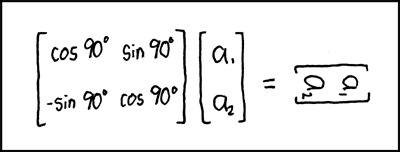
In fact, draw all your rotational matrices sideways. Your professors will love it! And then they'll go home and shrink.
Matrix Transform [Explained]
Transcript Under the Cut
[A square matrix next to a vertical two-by-one matrix, equated to a horizontal matrix that looks like the two-by-one matrix turned 90 degrees.]
[Square matrix: cos90° sin90° -sin90° cos90°] [Two by one matrix:] [a₁ a₂] [An equal sign]
[The same two by one matrix, but rotated by 90 degrees clockwise:] [a₁ a₂]
31 notes
·
View notes
Text
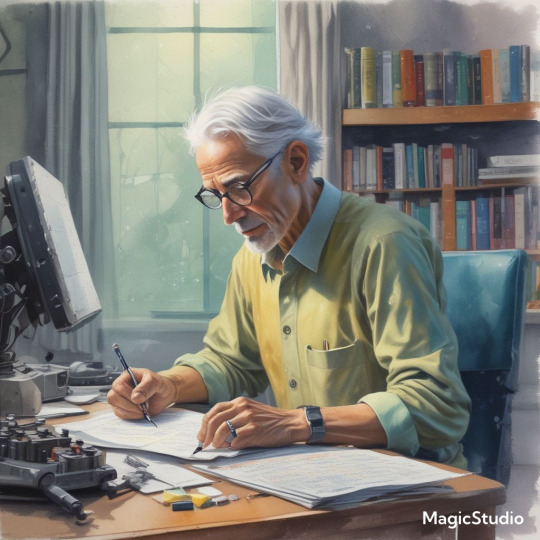
The Mathematical Foundations of Machine Learning
In the world of artificial intelligence, machine learning is a crucial component that enables computers to learn from data and improve their performance over time. However, the math behind machine learning is often shrouded in mystery, even for those who work with it every day. Anil Ananthaswami, author of the book "Why Machines Learn," sheds light on the elegant mathematics that underlies modern AI, and his journey is a fascinating one.
Ananthaswami's interest in machine learning began when he started writing about it as a science journalist. His software engineering background sparked a desire to understand the technology from the ground up, leading him to teach himself coding and build simple machine learning systems. This exploration eventually led him to appreciate the mathematical principles that underlie modern AI. As Ananthaswami notes, "I was amazed by the beauty and elegance of the math behind machine learning."
Ananthaswami highlights the elegance of machine learning mathematics, which goes beyond the commonly known subfields of calculus, linear algebra, probability, and statistics. He points to specific theorems and proofs, such as the 1959 proof related to artificial neural networks, as examples of the beauty and elegance of machine learning mathematics. For instance, the concept of gradient descent, a fundamental algorithm used in machine learning, is a powerful example of how math can be used to optimize model parameters.
Ananthaswami emphasizes the need for a broader understanding of machine learning among non-experts, including science communicators, journalists, policymakers, and users of the technology. He believes that only when we understand the math behind machine learning can we critically evaluate its capabilities and limitations. This is crucial in today's world, where AI is increasingly being used in various applications, from healthcare to finance.
A deeper understanding of machine learning mathematics has significant implications for society. It can help us to evaluate AI systems more effectively, develop more transparent and explainable AI systems, and address AI bias and ensure fairness in decision-making. As Ananthaswami notes, "The math behind machine learning is not just a tool, but a way of thinking that can help us create more intelligent and more human-like machines."
The Elegant Math Behind Machine Learning (Machine Learning Street Talk, November 2024)
youtube
Matrices are used to organize and process complex data, such as images, text, and user interactions, making them a cornerstone in applications like Deep Learning (e.g., neural networks), Computer Vision (e.g., image recognition), Natural Language Processing (e.g., language translation), and Recommendation Systems (e.g., personalized suggestions). To leverage matrices effectively, AI relies on key mathematical concepts like Matrix Factorization (for dimension reduction), Eigendecomposition (for stability analysis), Orthogonality (for efficient transformations), and Sparse Matrices (for optimized computation).
The Applications of Matrices - What I wish my teachers told me way earlier (Zach Star, October 2019)
youtube
Transformers are a type of neural network architecture introduced in 2017 by Vaswani et al. in the paper “Attention Is All You Need”. They revolutionized the field of NLP by outperforming traditional recurrent neural network (RNN) and convolutional neural network (CNN) architectures in sequence-to-sequence tasks. The primary innovation of transformers is the self-attention mechanism, which allows the model to weigh the importance of different words in the input data irrespective of their positions in the sentence. This is particularly useful for capturing long-range dependencies in text, which was a challenge for RNNs due to vanishing gradients. Transformers have become the standard for machine translation tasks, offering state-of-the-art results in translating between languages. They are used for both abstractive and extractive summarization, generating concise summaries of long documents. Transformers help in understanding the context of questions and identifying relevant answers from a given text. By analyzing the context and nuances of language, transformers can accurately determine the sentiment behind text. While initially designed for sequential data, variants of transformers (e.g., Vision Transformers, ViT) have been successfully applied to image recognition tasks, treating images as sequences of patches. Transformers are used to improve the accuracy of speech-to-text systems by better modeling the sequential nature of audio data. The self-attention mechanism can be beneficial for understanding patterns in time series data, leading to more accurate forecasts.
Attention is all you need (Umar Hamil, May 2023)
youtube
Geometric deep learning is a subfield of deep learning that focuses on the study of geometric structures and their representation in data. This field has gained significant attention in recent years.
Michael Bronstein: Geometric Deep Learning (MLSS Kraków, December 2023)
youtube
Traditional Geometric Deep Learning, while powerful, often relies on the assumption of smooth geometric structures. However, real-world data frequently resides in non-manifold spaces where such assumptions are violated. Topology, with its focus on the preservation of proximity and connectivity, offers a more robust framework for analyzing these complex spaces. The inherent robustness of topological properties against noise further solidifies the rationale for integrating topology into deep learning paradigms.
Cristian Bodnar: Topological Message Passing (Michael Bronstein, August 2022)
youtube
Sunday, November 3, 2024
#machine learning#artificial intelligence#mathematics#computer science#deep learning#neural networks#algorithms#data science#statistics#programming#interview#ai assisted writing#machine art#Youtube#lecture
4 notes
·
View notes
Note
Can you love a machine? That's what Lasky wants to ask the Master Chief as he sits in front of Sarah's new promethean form. The Chief, immune to the Composer, but not immune to the suffering he feels about dragging her on this mission. In return, she is immune to his guilt because - well, does she even cycle emotions.
He hated seeing both of them like this. Halsey had come up with a "radical approach" for integration. To see him readily sacrifice himself once again, laying on an operating table face down with his spine exposed.
All to give him back Sarah. "Electrophysiology synced, Doctor." Roland's somber voice says from his pedestal, serving as an intermediary between the Chief and Sarah.
"John?" Halsey asks, as she monitors his gamma and beta waves to see if it dips.
He doesn't say anything, face down, probably being in the worst pain that he's ever been in with the multitude of probes across exposed nerves.
After a tense thirty-seconds, before Halsey could ask again, this time a thin underlay of panic in her voice, the Chief took a deep inhale as he, Roland, and Sarah started to make the same twitching movements.
Lasky almost leapt to stop Halsey before the monitors lit up with various things: a Forerunner, the matrices, the inner workings of Roland's complex decision trees and matrix transformations, flashes of Sarah -
"Memories, Captain Lasky." Halsey muttered, as if it was obvious, "They are in synchronization. They are attempting to rebuilt Commander Palmer's humanity from a mixture of organic electroimpluses through the filter of Roland's ... matrices."
"Halsey-" Glassman interrupts as a myriad of alarms start go off, and Roland starts screaming, "Master Chief's bios - they're all over the place and they're fluctuating wildly - he's going to go into arrest. You need to stop."
"We are almost there." She said through gritted teeth.
Memories of flashing lights, Roland screaming that it burns as the Chief started to seize on the table.
"End it, Halsey!" Lasky said, "We can't lose three people on one day."
"Almost there." She replied, her hand making a stopping motion between him and four other Spartan IVs.
"Halsey!"
"Sir, we're losing anti-grav on decks four, seven and eight. Local hydroponics have sprung leaks and S-Deck is reporting power outages."
"His Gamma waves are reaching critical values, even for an integrated Spartan, Halsey!"
"You're going to fry them all!"
"Almost there."
Cortana's face flashed on the screen, and Roland asking the question: "promise us you'll figure out which one of us is the machine"
The helplessness that Lasky felt was something that he hadn't felt since Cadmon's death, or fuck, even Chryler's death. What did he do? Just stand there and let it happen?
"Catherine Halsey, I'm ordering you to -"
A watcher deployed from the Promethean's back and in a screech, it and Roland said: "Beginning neurological reconfiguration. Recomposing harmonies. Our song has changed. We sing Alone."
Memories started to flood screens, children fighting each other, a small hand reaching for a bell. A woman in a playground asking to flip a coin.
"For heaven's sake, am I medical now?" Halsey proclaimed, grabbing a syringe and flicking her finger to turn over the table.
Then, Roland asked, whether it was Sarah, Chief or Roland himself:
"Am I a machine?"
Mehs, I am going to get you. You attack me in my own inbox, trying to hurt several of my guys at once. This is beautiful. We are getting operating tables involved? Okay Mehs okay. Hi friend
#when the workday is over you will answer for what you have done#i love this#mehs friend tag#promethean knight palmer au#Sarah Palmer#roland the ai#john 117#Thomas Lasky#Catherine Halsey#fic tag#asks
25 notes
·
View notes
Text
The Prime of His Youth: Book V: Where There's Smoke: Ch22: Light in the Dark
Charon stood on Moon Base Beta, looking up at Cybertron. She looked over to Japheth, "And what are we doing on this Prime forsaken rock?" she asked, and then immediately looked away, ashamed of what she had said to the Prime literally not forsaking it.
"We took care of the Zombies." He said with a smile, "But people are still reluctant to settle here." He then ooked up at Cybertron. He felt the power of it's Spark this far away. He then looked back at her, anticipating her next question.
"And what - in the name - of Vector Prime - is a Zombie?" Charon harshy asked Him, and He just smiled back at her.
"Terrorcon." Arcee sardonically stated. "The Human version of it."
"Right..." Charon voiced, looking up at Japheth Prime, "Just hard to get that he used to be Human."
"The two Matrices are forever entwined." Japheth distantly uttered.
"And, does He, like, never tell us the slagging plan?" Charon grumbled.
"He waits until He is sure." Arcee said.
"It's His best trait." Jumpstream stated, as Pyra Magna stepped up beside her. Charon looked Pyra Magna in the eyes, and the Rust Maidens quickly transformed and combined into Victoria.
"Don't take away our fun." Victoria admonished her.
"Fun?" Charon harshly asked, and Japheth's smile returned, wider than ever. "What?"
"I think He might have learned too much from the Wreckers." Wheeljack stated, and Charon's head snapped over to glare at him. "If you're going somewhere, He expects you to look it up."
Charon thought this over for a moment, before giving Victoria a curious look.
"We ARE archeologists." Victoria's great contralto replied. Charon narrowed her eyes, "Okay, yeah, we don't exactly act like it."
"And what exactly are you planning to do?" Charon accusingly asked.
Victoria's great gravity sword appeared on her right hand, and Charon struggled to not show how nervous she was.
Japheth grabbed his new sword in it's sheath, and lifted the pair, "When together," he said to her, walking passed Charon towards Victoria, "it won't cut. Perfect for sparring."
"And you're going to fight?" Charon asked, and looked up at Victoria, "Her."
"We did tell you." Victoria said to her with confidence.
"Tell me what?" Charon prodded.
"He beat me, not us, the Rust Maidens, but ME, Victoria. When we first met. That is why I kneeled to Him to easily."
"Yeah..." Charon ascerbically stated, "I've heard of what you do on your knees."
"That's was after." Victoria said, "And with Arcee's encouragement. It was..." she said, and trailed off into her thoughts.
"I didn't ask." Charon dismissed.
"It's better than anything you've ever experienced..." Victoria uttered, and Charon's 8 eyes grew wide, "Better than anything you can imagine."
"We'll have plenty of time for that later." Japheth stated, pointing his sword up at her.
"So, we're here for wargames?" Charon asked, "Not to, I don't know, build you a castle?"
Japheth looked at her, and then far into the distance.
"Um?" Charon asked.
"Now He's thinking about it." Arcee added.
"Implying He didn't before?" Charon asked, Japheth still looking distant.
"He has a home on Caminus." Victoria's great contralto stated.
"And the one in New Kalis." Arcee added.
Victoria looked up to the mount on which Airachnid had held her throne.
"Memories?" Arcee asked her.
Victoria looked down to her, "Actually, it would be a great place for a castle." She then looked back at it.
Miko transformed into a landing beside them, "It would be fucking awesome!" she shouted. "Because of the hell we caused, you've got room for... what are they called, those bridges?"
"Draw bridges." Victoria stated. Miko gave Arcee a curious look, but she just shrugged. Miko then turned to give Victoria the same look. "Yes, why would I take an interest in Terra's siege warfare?"
"Good point." Miko said, nodding, "Good point."
"A castle would be... useful..." Japheth non-commitally added.
"It would be high enough to use as an orbital spire." Victoria stated.
Japheth gave her a curious look, as something occured to him, "Is that from Knockout's war..."
"Yes!" Victoria gloriously bellowed. "Sorry."
"Don't..." he uttered.
"You should try it out." Victoria said with a smile.
Japheth looked up at the mount, "Maybe when I'm not saying the world."
"Which world?" Charon asked.
He turned to give her a smile that actually frighened her, "I haven't run out, yet." He then looked back up at the mount.
"Are you going to fight?" Miko whined, "Because I want to play with your helicopters."
"Shall we?" Victoria asked.
Charon turned to look at the mount, only to hear a horrendous thump. She turned back only to find Victoria on her back, ground broken beneath her, with Japheth pointing his new sword at her throat. He then pulled it away. It stopped glowing. He moved it to his left hip, and it affixed. He then reached his hand down. Victoria reached her right hand up, and he helped her to her feet.
Even a few moments later, Charon had not recovered from it, and stood, mouth agape. Victoria broke apart, with the pair of helicopters flying off. Miko jumped up into a transformation to chase after them.
"Play nice!" Japheth shouted.
* * *
Roxana turned to Ratchet, at the medic station, "This has to be hard on you?" she asked, and he grumbled in reply.
"I see why you would say that." Ratchet replied.
"It's not?" Roxana asked him.
Ratchet grumbled for a moment before continuing, "This is the first time when I'm happy to sit on the sidelines."
"Oh?" Roxana asked.
"There are no moral issues involved." he uttered, "I don't have to worry about the few friends I have left rusting in the dirt."
"Soooo, fun?" Roxana asked, and he weakly smiled.
The shadow of Colossus covered him.
"We get to see - the effect - of our experiments." Colossus uttered. "There will be no uncertainty when they use it in conflict."
"I do - try - to minimize that." Knockout added.
"Try." Ratchet grumbled.
"There is only so much we can do - with gravity manipulation - and the power of the Primes." Colossus uttered.
Sundance peeked out of his great shadow, "AND, it's fun."
Colossus looked over to Ratchet, before slowly looking at her, "Like our esteemed elder." he said, and paused to let Ratchet grumble, "Fun is not my strong suit."
"He says that, and then will spend hours painting a single miniature." Knockout quickly stated.
"Most - people - would - not - consider - that - fun." Colossus uttered.
"Have you seen them?" Knock Out asked, "They're beautiful."
Colossus bashfully looked away.
* * *
Smokescreen drove along, with Sierra in his passenger seat. Airachnid flew above them. Golden Hind drove beside him. Behind him was Pyrrha, capable of keeping up, so long as he did not push himself. Beside was a centipede running along catepillar tracks. Behind them was a colossal wasp, and a bombadier beetle.
"Quite the mottley crew." Airachnid viciously said from above them.
"That would mean a bit more if it wasn't coming from a spider." Smokescreen offhandedly replied.
"Can she not sound like a psychopath for half a cycle?" Golden Hind uttered.
"No." Sierra said without any judgement.
"What?" Golden Hind asked.
Again, without judgement, Sierra continued, "You see things in black and white."
"Thanks to our fearless leader," Airachnid viciously replied, "I am no longer black, but white."
"And pink." Sierra neutrally added.
"She means good and evil." Golden Hind viciously said over the comms.
"Well..." Airachnid visciously said, and paused a moment, "the good part I am not exactly - good at." she said with glee.
"You fight for Japheth." Sierra said.
"And... that's it?" Airachnid asked her.
"Too be fair, he is that good." Smokescreen non-commitally added.
"Good in both senses." Sierra added. "So long as you stay in his good graces, you - ARE - good."
A pregnant pause followed, "And that's it?" Airachnid asked, "That is all I have to do - to be - good?" she said, her tongue twisting around that last word, like tentacles around it's prey.
A pregnant pause followed, "After everything you have been though?" Sierra asked, "You can still think it was easy?"
Another great pause followed, "To be fair," Airachnid evasively replied, having trouble maintaining a stable heading, "after everything I have been through..."
"If anyone can feel the pain in your spark?.." Smokescreen asked, and horrendous pause followed, burrowing deep into Airachnid's spark.
"AND?!" she demanded.
"It's Japheth." Sierra simply replied.
"And, honestly, if there is anyone that can help you with it." Smokescreen continued.
"It's Japheth." Sierra repeated.
Airachnid flew in uncomfortable silence, as this bore deeper and deeper into her Spark, into her core, into her very being. For the first time, in her life, she wanted the darkness to be lessened. She wanted to find peace.
"But, could I find it, after everything I've done?" she asked over the comms.
"Fun team." Bee Wolf stated.
"More cohesion than most swarms." Centikanzer dourly added.
"Sparks are brightest in the dark." Pyrrha stated.
"Do we even have their sparks?" Petard asked.
"From what my swarm tell me, our queen thinks they do."
"Queen?.." Centikanzer flatly asked.
"What else could we call someone so beautiful and majestic?" Pyrrha asked.
"I haven't seen his face, yet." Petard stated, "But I want to see it when you say that to his face."
2 notes
·
View notes